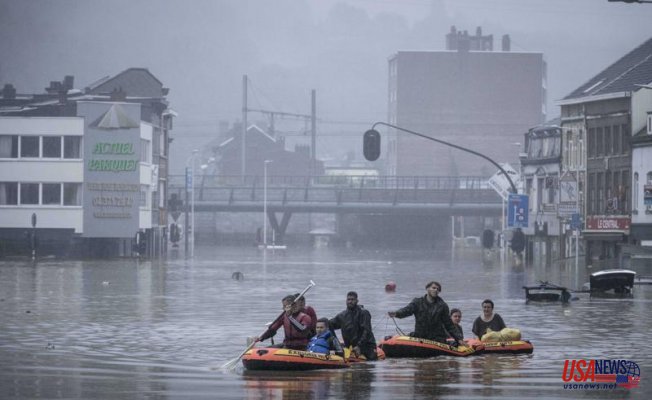Despite numerous warnings, politicians were stunned by the severity of the flash flooding that claimed over 150 livesthis Week in the lush rolling hills West Europe.
According to climate scientists, the connection between extreme weather and global heating is obvious and it is urgent that we do something about it.
Although scientists aren't able to determine whether climate change is responsible for flooding, they do believe it has contributed to extreme weather events across the globe, from Siberia to Europe’s Rhine region to the west U.S.A.
Professor Wim Thiery from Brussels University said that there is a clear connection between extreme precipitation and climate change.
Professor of ocean physics at University of Potsdam Stefan Rahmstorf said that some records are "so extreme that it would be practically impossible without global warming."
These are all casualties of climate crisis, according to Sir David King, Chair of the Climate Crisis Advisory Group. We will only see extreme weather events becoming more frequent.
This week's catastrophe was a warning tale for Diederik Samsom (the European Commission's Cabinet chief behind the massive proposals to spend billions of dollars and force industry to implement drastic reforms to reduce global warming gases by 55% in the next decade).
"People are being washed away in Germany, Belgium, and the Netherlands too." He spoke on conference calls of the European Policy Centre think-tank. "A few years back, to discuss climate change you had to point out a distant point on the planet or in the future. It's happening right now -- it's here.
Climate scientists have identified two factors that contributed to this week’s calamity.
First, air can absorb 7% more humidity for every 1° Celsius (1.8° Fahrenheit) increase in temperature. The air can retain water for longer, which leads to drought. However, it also causes an increase in heavy, dense rainfall after it is released.
Another factor that defines storms is their tendency to hover over one area for longer periods of time than normal, dumping more rain onto a smaller part of the globe. Scientists also believe that warming may be a factor. The weather in Europe is determined by a jet stream of high winds that are six miles (6 kilometers) tall. It is fed by the temperature difference between the Arctic and the tropics.
Thiery stated that Europe is warming, and Scandinavia is currently experiencing an unusual heat wave. The jet stream is weakening, which causes its meandering course of travel to stop sometimes for days.
He claimed that such a phenomenon was also visible in Canada, where it caused a heat dome in which temperatures reached 50 C (122 F).
He said, "And it's causing the heavy rainfall that we have seen across Western Europe."
Extreme weather will continue to be more common even if greenhouse gas emissions are reduced in the next decade. This is because of the high levels of carbon dioxide in the atmosphere.
Experts predict that such phenomena will strike areas that aren’t ready for them.
Lamia Messari Becker, an engineer professor at the University of Siegen, stated that "we need to make our built environment -- indoor spaces, buildings, and cities -- more resilient against climate change."
People who don't adapt to changing conditions will be at greater risk of losing their lives and causing property damage, stated Ernst Rauch, chief climate scientist and geoscientist at Munich Re.
He said, "The events of yesterday and today give us an indication that we need to be better prepared for these types of events." Although the events aren't really surprising, the magnitude of them has probably surprised some.













